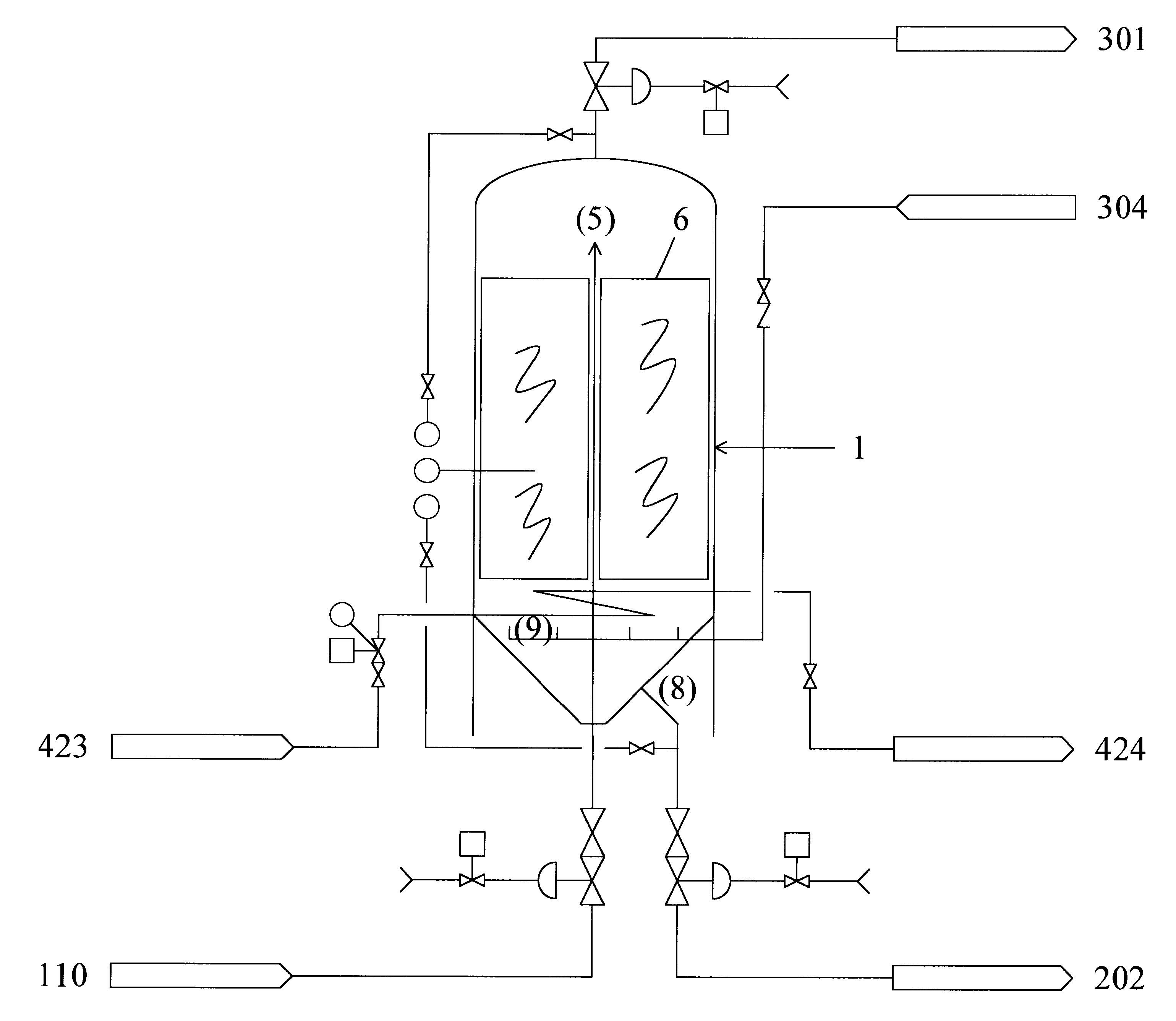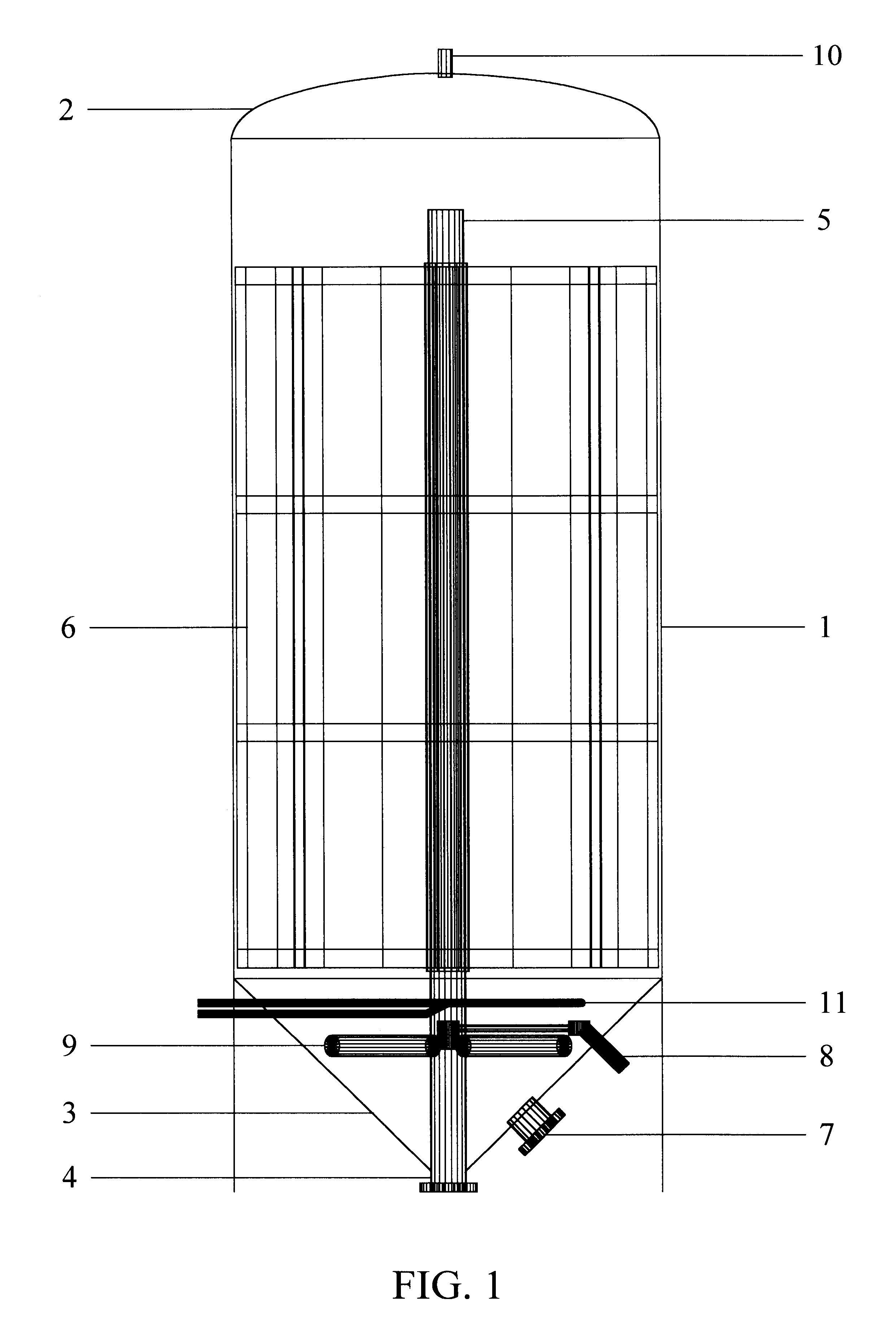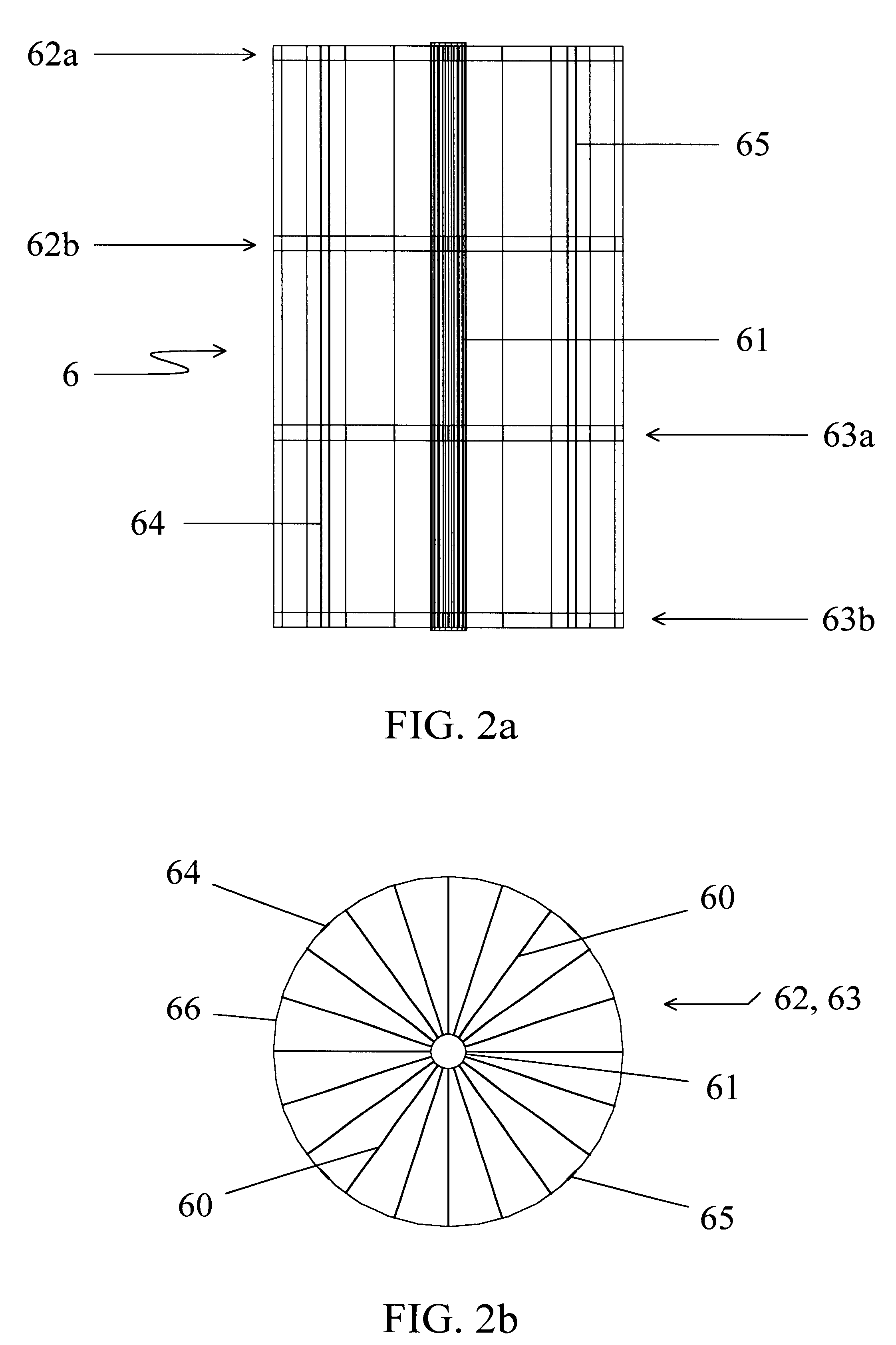Anaerobic digester system and method
a technology of anaerobic digester and digester, which is applied in the direction of sustainable biological treatment, biological water/sewage treatment, biological sludge treatment, etc., can solve the problems of increasing the total hydraulic retention time, unable to access the appropriate and acclimated, and unable to achieve the appropriate and acclimation, so as to increase the density of slow-growing methanogen populations and increase the alkalinity of bicarbona
- Summary
- Abstract
- Description
- Claims
- Application Information
AI Technical Summary
Benefits of technology
Problems solved by technology
Method used
Image
Examples
Embodiment Construction
In the present invention, an anaerobic digester vessel of improved design is provided with bacterial cell immobilizing matrices for the purpose of anaerobic digestion (bioconversion) of high suspended solids (greater than 80,000 mg / liter suspended solids by weight), and uses gas as its mixing energy in a counter current direction, under diffuse low-intensity light irradiation. The suspended solids, particulate organic wastes, especially solid wastes (the digestible fraction of municipal wastes) comprised of pre-consumer and post-consumer food wastes, including fats, oils and greases, food processing wastes, yard trimmings, leaves, and paper.
Anaerobic digesters have historically been used by municipalities for sewage biosolids digestion, by the agricultural animal byproduct industry for conversion of low solids or screened animal manure and to a limited degree by the food processing industry, for digestion of low suspended solids or high soluble solids as in anaerobic filters or upfl...
PUM
 Login to View More
Login to View More Abstract
Description
Claims
Application Information
 Login to View More
Login to View More - R&D
- Intellectual Property
- Life Sciences
- Materials
- Tech Scout
- Unparalleled Data Quality
- Higher Quality Content
- 60% Fewer Hallucinations
Browse by: Latest US Patents, China's latest patents, Technical Efficacy Thesaurus, Application Domain, Technology Topic, Popular Technical Reports.
© 2025 PatSnap. All rights reserved.Legal|Privacy policy|Modern Slavery Act Transparency Statement|Sitemap|About US| Contact US: help@patsnap.com



